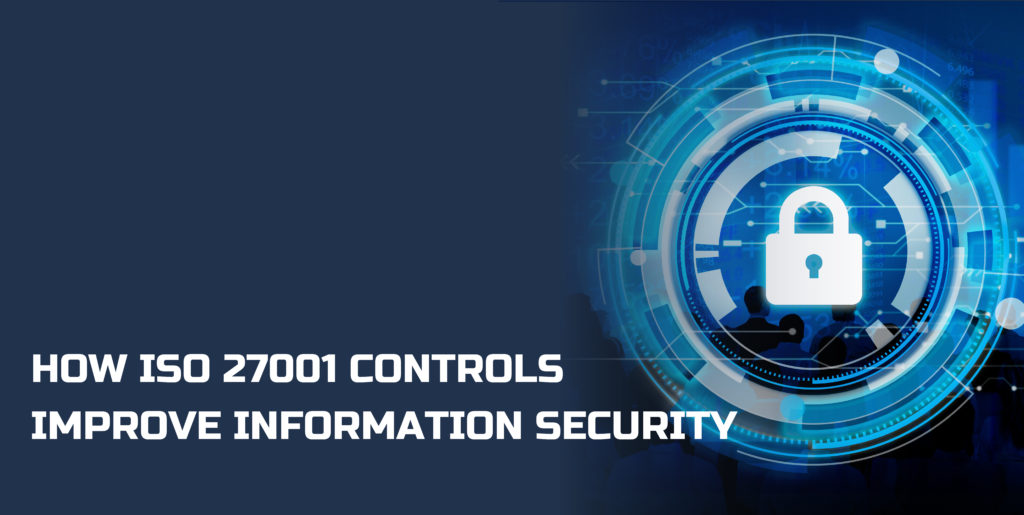
In today’s digital world, ensuring security of sensitive data and information is very important for any organization. ISO 27001 certification is an internationally recognized standard that gives guidelines for information security management. Moreover, it provides a framework of how to protect data from cyber threats, breaches, and other security risks. Additionally, controls of ISO 27001 give guidance to create a safe and legal workplace for the employees.
What Are ISO 27001 Controls?
ISO 27001 certification controls are guidelines which help organizations to manage risks related to information security. These controls are written in Annex A of the standard and act as a catalog of best practices that organizations can and should adopt.
Previously ISO 27001 included 114 controls which were divided into 14 categories. However, the updated version of 2022 has now changed it and has reduced those 14 categories to 4 broad categories. These have been updated and restructured according to the modern challenges in terms of security. The 4 categories now are; organizational controls, people controls, physical controls, and technological controls. These categories make it easier for organizations to change and implement the rules accordingly.
Categories of ISO 27001 Controls
Organizational Controls:
Organizational controls talks about policies and procedures required to create a secure work environment. It includes giving proper roles and responsibilities, managing incidents, and making sure legal and regulatory standards are being met. The latest revision of ISO 27001 added a new point which is threat intelligence. Threat intelligence guidelines are added to help businesses anticipate potential risks before they get worse. Overall, organizational controls focus on how a company manages and handles its data to guarantee continued safety and security.
People Controls:
Human error is one of the biggest risks to information security. People’s control focuses on managing the human resource element of information security. The guidelines include background checks done for employees, security awareness training, and clearly defined responsibilities in order to prevent accidental data breaches. Moreover, regular training sessions and internal communication are important as they help employees remain vigilant and aware of potential security threats.
Physical controls:
Physical security is very important in information security. ISO 27001 also talks about physical safeguards to ensure that offices, data centers, and other physical assets of the organization are protected and safe. It includes access restrictions, visitor management, and safe disposal of sensitive information. Simple measures like implementing a clear desk policy or securing data centers against unauthorized entry can significantly enhance an organization’s overall security measures.
Technological Controls:
This category addresses the technological measures required to maintain secure systems and networks. It includes encryption, access control, malware protection, and regular system updates. Moreover, a crucial aspect of this control is cryptography. This means organizations must manage their encryption protocols and key lifecycles to ensure data confidentiality and integrity. Furthermore, the new controls also focus on network security by concentrating on information security during delivery.
Why Are ISO 27001 Controls Important?
ISO 27001 controls provide a comprehensive, risk-based approach to safeguarding information. Benefits of adopting these controls in an organization are:
Ensure regulatory compliance: Implementing ISO 27001 controls helps organizations align with these laws, avoiding hefty penalties.
Improve risk management: A company should constantly identify, evaluate, and mitigate possible information security risks. Because of this, it helps businesses safeguard sensitive data from both internal and external attacks.
Boost customer trust: Achieving ISO 27001 certification shows customers that your organization is committed to ensuring data security within the organization. This can give the company a competitive advantage and customer’s build trust.
How to implement ISO 27001 Controls
This section will briefly discuss the steps to implementing ISO 27001 controls.
Conduct a risk assessment: Identify the specific threats your organization faces, and select controls accordingly that will help your organization to mitigate risks effectively.
Develop a Statement of Applicability (SoA): Then the organization makes a SoA. It will include how each control will be applied and why it is relevant to the company.
Engage your employees: An ISMS is most effective if the employees are involved in the process. Moreover, regular training and updates will keep them aware of their role in maintaining security.
In conclusion, ISO 27001 controls provide comprehensive guidelines on how to protect the organization’s information technology. Following these guidelines will ensure compliance, mitigate risks, and as a result, safeguard the organization’s reputation.
With digitalization, the risk of cyber-attacks has also increased and advanced. Hence, a company needs to have a proper information security framework in place to fight against it. Adopting ISO 27001 controls can significantly enhance the organization’s ability to protect sensitive data and information. Hence, it will increase customers’ trust.
You can visit our website to get more information related to ISO 27001.
